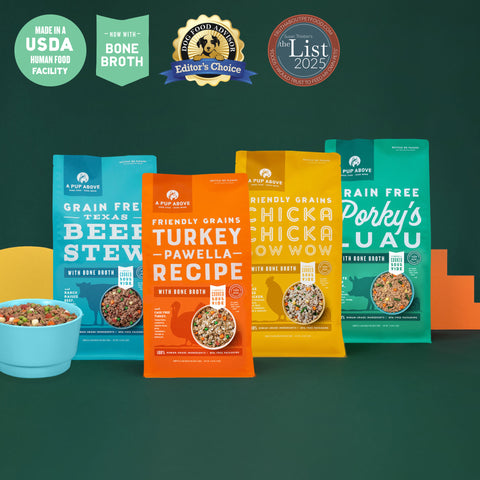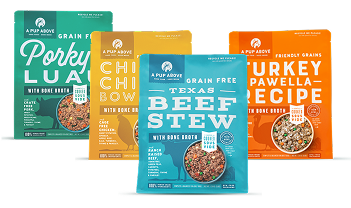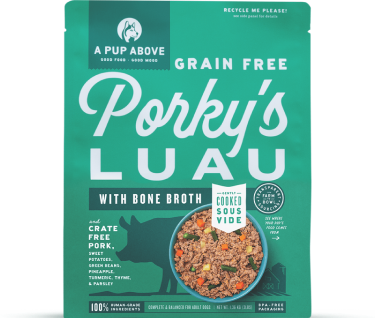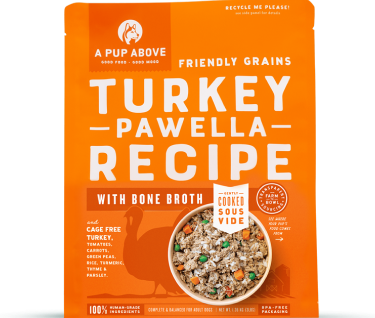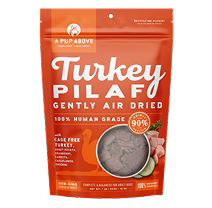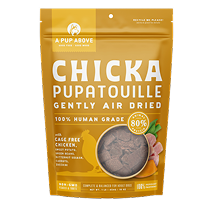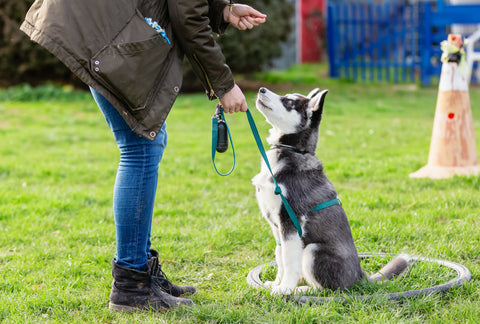
Raw Frozen Dog Food vs. Kibble
When it comes to feeding our pups, the choices can feel endless and a bit overwhelming. Topping the list of modern canine diets are raw frozen food and kibble — each with its own set of champions and critics. But what really sets these two apart, and how can you decide which is best for your dog’s health and well-being?
From understanding the basic definitions to diving deep into the benefits and drawbacks of each option, let's unravel the myths and facts to help you make the most informed decision for your beloved dog.
What Is Raw Frozen Food?
Raw frozen food for dogs is exactly what it sounds like: meals that are prepared from fresh, raw ingredients and then frozen to preserve their nutritional integrity until mealtime. This category of dog food typically includes a variety of meats, bones, organs, and sometimes fruits and vegetables — all frozen at peak freshness.
What Is Kibble?
Kibble is the quintessential dry dog food that has fed generations of dogs. It consists of a mixture of ingredients, including meats, grains, legumes, and vegetables, which are cooked together through a process called extrusion.
During this process, the ingredients are combined, cooked at high temperatures, and then formed into small, bite-sized pieces that are easy to store and serve.
Grain Free vs. Grain-Inclusive
The debate between grain-free and grain-inclusive dog foods is a hot topic among dog owners today. Grain-free dog foods replace traditional grains like wheat and corn with alternative sources of carbohydrates, such as potatoes, peas, or lentils.
On the other hand, grain-inclusive dog foods include grains, which are a source of essential nutrients like fiber, which aids in digestion, and essential fatty acids. Grains also provide a stable source of energy for dogs.
Benefits of Raw Frozen Food
Now that you're clued into the basics of raw frozen food and kibble, let's zoom in on why raw might just be the super choice for your canine companion:
- Allergies: Say goodbye to the sniffles and itches. Raw diets keep it simple and clean with fewer ingredients, making it a breeze to dodge those pesky allergens. Whether it’s chicken, beef, or grains causing the fuss, a shorter ingredient panel will make the whole process easier to manage.
- Skin and Coat Health: Ever wanted your pup to strut their stuff with a show-stopping shine? The natural fats and oils in raw food might just be your secret weapon. Pet parents often rave about the mirror-like sheen and puppy-soft feel of their dogs' coats after switching to raw.
- Digestibility: Think of raw food as the smoothie of the dog world — it keeps much of the good stuff intact. With minimal processing, these foods hang onto their natural enzymes, meaning your dog can easily break down and soak up all those nutrients, making every meal a mini boost to their health.
- Protein Content: When it comes to protein, raw diets don’t play around. They pack a punch with high-quality sources that support everything from bulging muscles to brain power. Plus, with a variety of protein options from chicken to whitefish, your dog gets a spectrum of essential amino acids to keep them leaping and bounding day after day.
Drawbacks of Raw Frozen Food
Raw frozen food has its fanfare, but it’s not all smooth sailing. Here’s a peek at some of the hurdles that might make you pause before going all-in:
- Convenience and Accessibility: Love the idea of raw? Great! But remember, it demands a chunk of freezer space and some forward-thinking when it comes to meal prep. Thawing isn't instant, and if you're used to the grab-and-go style of kibble, this might slow your roll. It’s also not always just around the corner at your local store, so stocking up can become an expedition.
- Safety Concerns: Diving into a raw diet is a bit like becoming a kitchen scientist. You need to be on your toes with hygiene to dodge unwanted bacteria like salmonella. This means meticulous cleaning and careful handling every time you prep food, not just for your pup’s safety but for everyone in your home.
Benefits of Kibble
Switching gears to kibble, it's not hard to see why many dog owners stick to the tried and true:
- Convenience and Shelf Stability: Ready when you are, kibble is the ultimate grab-and-go food for your dog. No prep time, no mess, and an incredibly long shelf life mean you can always have a healthy meal on hand for your dog, even on your busiest days.
- Accessibility: Whether you’re in a city or a small town, finding kibble is as easy as walking into your nearest pet store. Available in a variety of brands, formulas, and price points, kibble ensures every dog owner can find an option that fits their budget and their dog’s dietary needs.
Drawbacks of Kibble
While kibble might be the king of convenience, it doesn’t wear the crown without a few thorns. Here are a couple of reasons you might hit a bump with kibble:
- Allergens: Kibble can sometimes be a minefield of potential allergens for sensitive dogs. Common ingredients like soy, corn, and wheat can trigger allergic reactions, leading to itchy skin and other discomforts.
- Protein Content: While kibble is convenient, the protein it offers can vary greatly in quality. The high-heat processing often used in kibble production can degrade the quality of proteins, making them less digestible and potentially less beneficial for your dog compared to fresher protein sources.
Other Options
Want to color outside the traditional lines of raw or kibble? If you’re itching to mix things up and dive into a world of varied doggy dining experiences, there are some tantalizing alternatives that might just do the trick.
Let's explore some innovative meals that keep things exciting for your dog’s palate.
Sous-Vide Dog Food
When it comes to feeding your pup a feast fit for royalty, nothing says gourmet like sous-vide. This method involves gently cooking food at low temperatures to lock in nutrients, flavors, and juices, ensuring each bite is as nutritious as it is delicious.
At A Pup Above, we’ve perfected this technique with our range of human-grade, sous-vide dog foods that are not only easy to digest but also high in protein and incredibly palatable. Think savory Turkey Pawella and hearty Texas Beef Stew — meals that will have your dog licking their bowl clean while getting all the nutrition they need.
Canned Dog Food
For those looking for a middle ground between dry kibble and fresh foods, canned dog food offers a moist alternative that’s both tasty and satisfying. Its shelf stability means you can keep it on hand for months without worry, and its palatability makes it a hit with even the pickiest eaters.
Plus, the moisture content in canned food can help keep your dog hydrated, making it a great choice for dogs who might not drink enough water on their own.
Freeze-Dried and Dehydrated Dog Food
If you’re drawn to the benefits of raw food but need something more convenient, freeze-dried and dehydrated options could be your hero. These foods undergo processes that remove moisture but keep the raw nutritional profile intact, offering the same benefits as raw diets without the need for freezer storage.
They rehydrate quickly, meaning you can provide a raw-inspired meal in minutes, combining the best of both worlds: the nutritional benefits of raw with the convenience of kibble.
Conclusion
So, there you have it — a full dish on raw frozen dog food versus kibble, plus some tempting alternatives that might just tickle your pup's taste buds. At A Pup Above, we're passionate about providing meals that aren't just eaten, but thoroughly enjoyed and immensely beneficial.
Whether you're leaning toward the natural richness of raw food, the straightforward simplicity of kibble, or the gourmet touch of sous-vide, our goal is to support your dog’s health with every scrumptious bite.
Ready to elevate your pup's meals? Visit A Pup Above today and treat them to the very best.
Sources:
Fresh vs Raw Dog Food vs Kibble: Which Diet Is Best For Your Dog? | American Kennel Club
Best Dog Food: How to Know What's Right for Your Dog | AKC
Top Stories

Why Do Dogs Lick Their Paws?

Why Do Dogs Whimper & Make Noises in Their Sleep?

Healthy Vet-Approved Homemade Dog Food Recipes
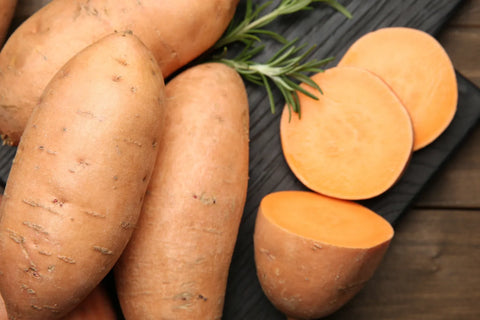
How To Cook Sweet Potatoes for Dogs
